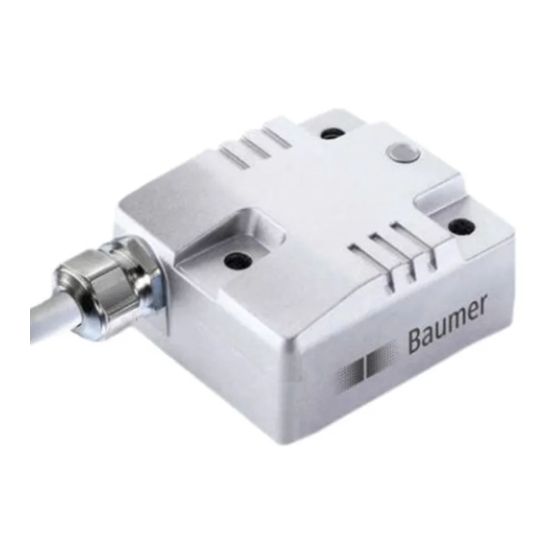Baumer GIM500R Podręcznik - Strona 6
Przeglądaj online lub pobierz pdf Podręcznik dla Akcesoria Baumer GIM500R. Baumer GIM500R 29 stron. Inclination sensors
Również dla Baumer GIM500R: Podręcznik (20 strony), Podręcznik (13 strony), Instrukcja montażu (2 strony)

CANopen
3.2
Under the technical management of the Steinbeis Transfer Centre for Automation, the CANopen profile was
developed on the basis of the Layer 7 specification CAL (CAN Application Layer). In comparison with CAL,
CANopen only contains the functions suitable for this application. CANopen thus represents only a partial
function of CAL optimized for the application in hand, so permitting a simplified system structure and the use
of simplified devices. CANopen is optimized for fast data exchange in real time systems.
The organization CAN in Automation (CiA) is responsible for the applicable standards of the relevant profiles.
CANopen permits:
• Simplified access to all device and communication parameters
• Synchronization of several devices
• Automatic configuration of the network
• Cyclical and event-controlled process data communication
CANopen comprises four communication objects (COB) with different characteristics:
• Process data objects for real time data (PDO)
• Service data objects for parameter and program transmission (SDO)
• Network management (NMT, Heartbeat)
• Pre-defined objects (for synchronization, emergency message)
All device and communication parameters are subdivided into an object directory. An object directory
encompasses the name of the object, data type, number of subindexes, structure of the parameters and the
address. According to CiA, this object directory is subdivided into three different parts. Communication
profile, device profile and a manufacturer-specific profile (see object directory).
CANopen communication
3.3
Communication profile
3.3.1
Communication between the network users and the Master (PC / Control) takes place by means of object
directories and objects. The objects are addressed via a 16 bit index. The CANopen communication profile
DS 301 standardizes the various communication objects. They are accordingly divided into several groups:
• Process data objects PDO for real time transmission of process data
• Service data objects SDO for read/write access to the object directory
• Objects for synchronization and error display of CAN users:
SYNC object (synchronization object) for synchronization of network users
-
EMCY object (emergency object) for error display of a device or its peripherals
-
• Network management NMT for initialization and network control
• Layer Setting Services LSS for configuration by means of serial numbers, revision numbers etc. in the
middle of an existing network
Baumer_GIM500R_CANopen_MA_EN.docx
03.19
6/29
www.baumer.com
